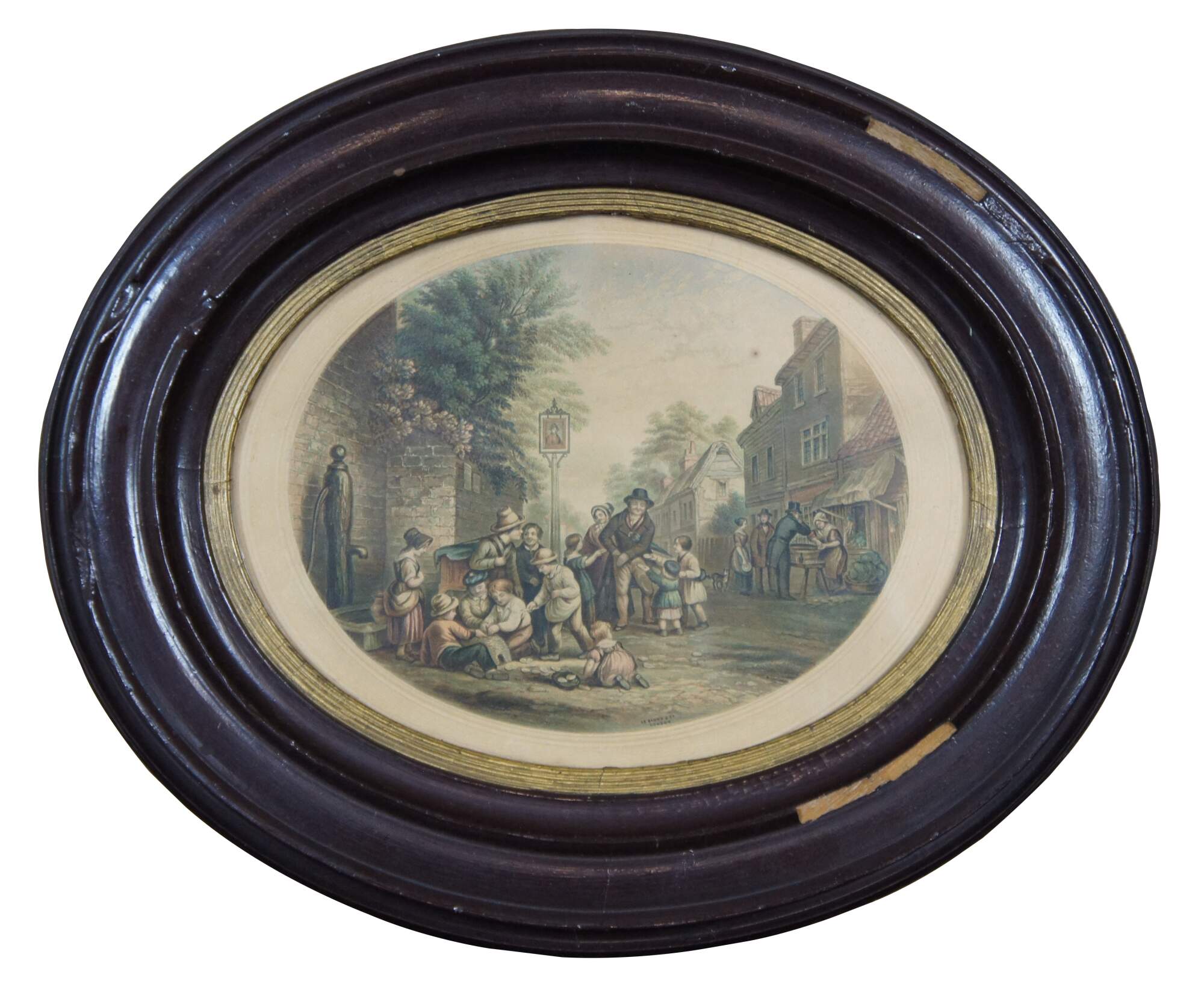
Shipping:
Free Shipping Included
Delivery:
Estimated 2-15 Business Days
Payments:
Credit Card, Check, Cash, PayPal, Apple Pay, Venmo
Returns:
30 Days 100% Money Back Guarantee, Buyer Pays Return Shipping
Description
Antique Victorian framed chromolithograph print by Le Blond & Co, London titled “Please Remember the Grotto.” Le Blond & Co published a series of 32 ovals between 1854 and 1867 representing nostalgic picture of rural life in the early 19th century.
“Abraham Le Blond was born on February 11th, 1819 in Wymondham, Norfolk, England, United Kingdom. One of three children, he was descended from an old aristocratic Huguenot family which included Christopher Le Blond who was known as 'The Father of the Three - Colour Process'.
Very little is known of Le Blond's early years, or where he learnt his trade as an engraver and printer. Records show, however, that the firm of Le Blond & Co. was established by Abraham and his older brother, Robert, between 1840 and 1845 at 4 Walbrook, London. Robert left the business in 1856, when he departed for America.
Le Blond & Co. became the first Baxter licensees in 1849. They enlarged their premises in 1850 and produced their first print by the Baxter Process ( the Royal Family at Windsor) in the same year. From 1850 until about 1867 the firm produced large quantities of prints using the Baxter Process. They produced many small prints which were used for pocket book illustrations and the 'ticket-trade' (labels for the fabrics trade) and Le Blond's work was often sold on his own special embossed mounts.
Le Blond produced just over 100 prints using the Baxter Process as well as some reproductions of Baxter's originals which have become known as 'Le Blond-Baxters'. Abraham Le Blond is best known today, however, for his set of 32 oval prints which are of an extremely high standard and much sought after today. Latter ovals bear the name 'L.A. Elliot & Co., Boston, U.S.' as well as the name 'Le Blond & Co., London' as many were produced for the USA market. The ovals were also unique in that they were printed directly onto the embossed mount unlike Baxter's prints which were glued to a mount after printing.
In 1867 George Baxter died, and a year later Le Blond acquired 66 sets of Baxter's original plates and blocks and republished these subjects. These Le Blond-Baxters were more cheaply produced than the original Baxters and generally are not of such high quality. Le Blond removed Baxter's signature from the plates and added his own, but unscrupulous dealers have been known to cut the print short to remove the Le Blond signature and pass the print off as a Baxter.
Like many other printers, Le Blond & Co. turned to the cheaper method of lithography, but even so the business ran into financial difficulties and in 1893 Le Blond sold all his plates and blocks (including those Baxters he had acquired) together with his stock of prints to Mr Frederick Möckler, a bank manager from Wooton-under-Edge. Finally, a receiver was appointed in 1894, the same year in which Abraham died, aged 75 years.”
Condition
Good Overall - Slight yellowing/couple spots/water stains to print, a few chipped portions of frame
Dimensions
12” x 1” x 10” / Sans Frame - 8” x 6” (Width x Depth x Height)